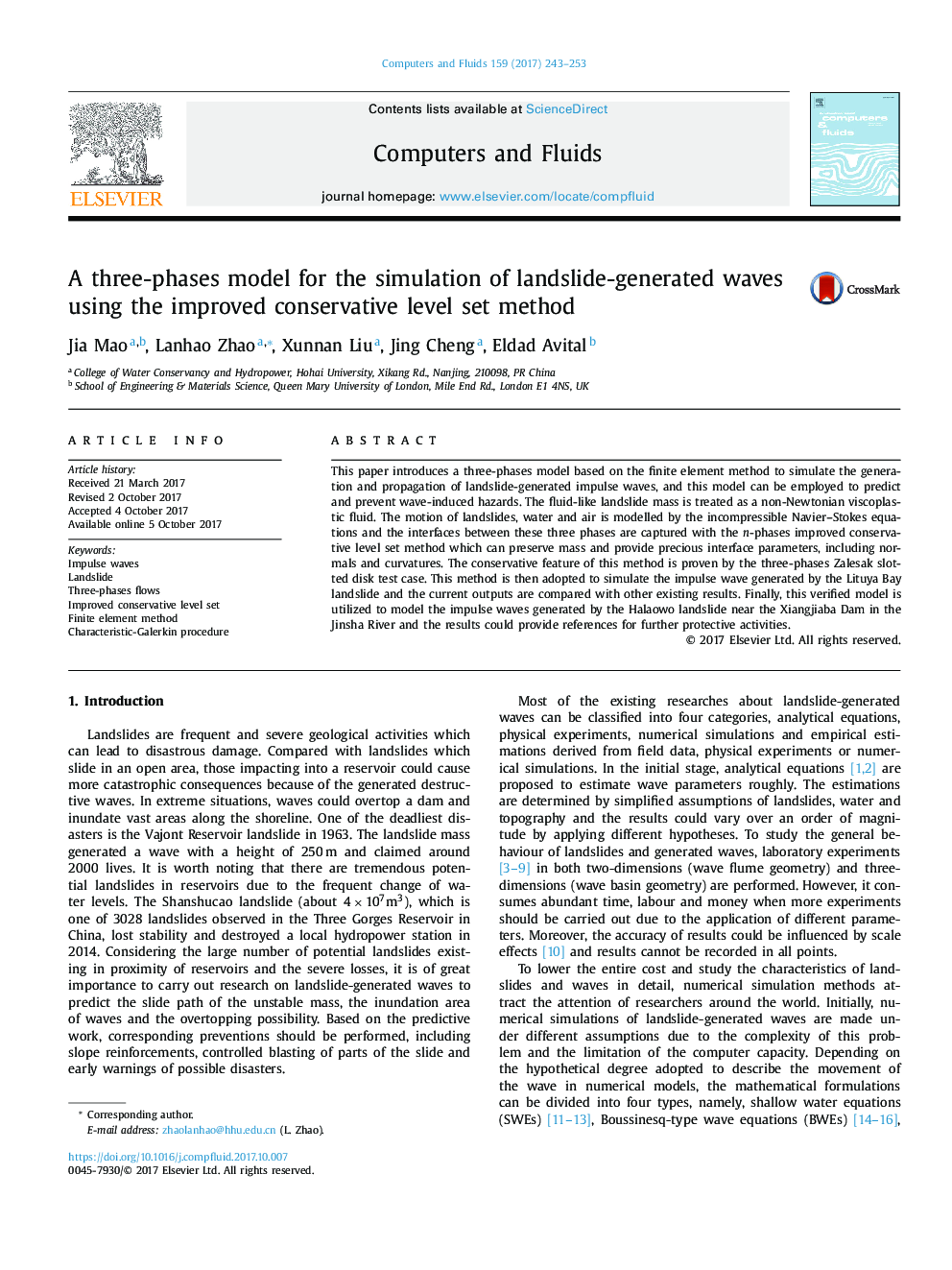| Article ID | Journal | Published Year | Pages | File Type |
|---|---|---|---|---|
| 5011669 | Computers & Fluids | 2017 | 11 Pages |
Abstract
This paper introduces a three-phases model based on the finite element method to simulate the generation and propagation of landslide-generated impulse waves, and this model can be employed to predict and prevent wave-induced hazards. The fluid-like landslide mass is treated as a non-Newtonian viscoplastic fluid. The motion of landslides, water and air is modelled by the incompressible Navier-Stokes equations and the interfaces between these three phases are captured with the n-phases improved conservative level set method which can preserve mass and provide precious interface parameters, including normals and curvatures. The conservative feature of this method is proven by the three-phases Zalesak slotted disk test case. This method is then adopted to simulate the impulse wave generated by the Lituya Bay landslide and the current outputs are compared with other existing results. Finally, this verified model is utilized to model the impulse waves generated by the Halaowo landslide near the Xiangjiaba Dam in the Jinsha River and the results could provide references for further protective activities.
Keywords
Related Topics
Physical Sciences and Engineering
Engineering
Computational Mechanics
Authors
Jia Mao, Lanhao Zhao, Xunnan Liu, Jing Cheng, Eldad Avital,
